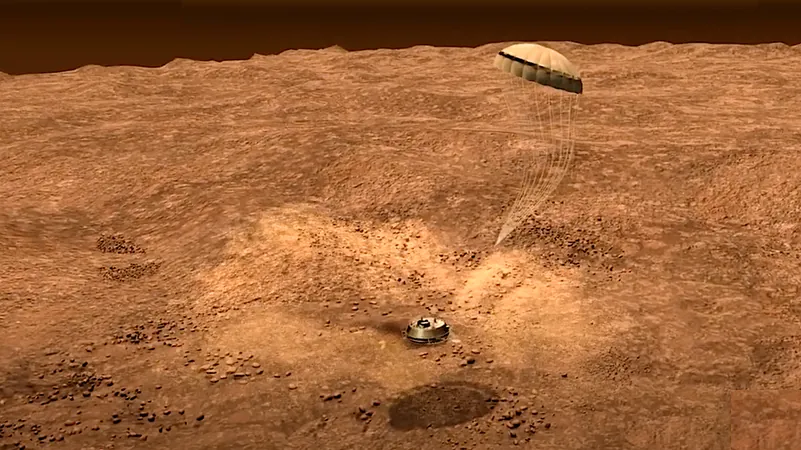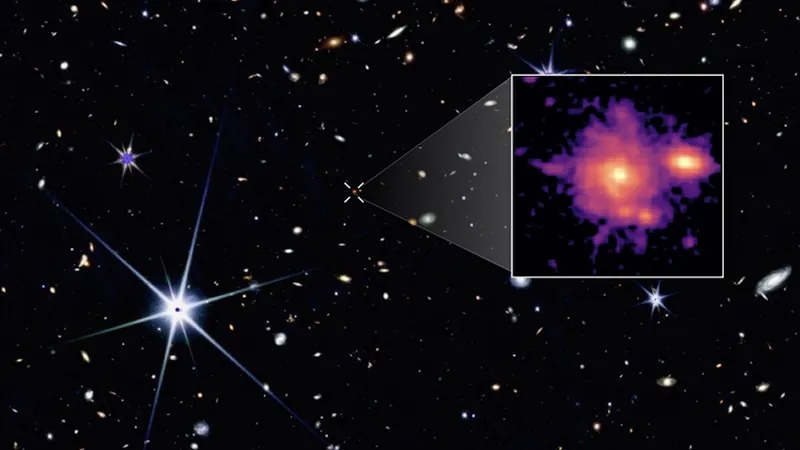
Unveiling the Marvels: The Top 10 Discoveries from Huygens at Titan
2025-04-08
Author: Sarah
On January 14, 2005, at 13:34 CET (12:34 UTC), the European Space Agency's (ESA) Huygens probe made history by successfully landing on Titan, Saturn's largest moon, marking humanity's first successful attempt to deploy a probe on a celestial body in the outer Solar System.
The Huygens probe was part of an incredible journey, hitching a ride with NASA’s Cassini spacecraft for an epic seven-year mission. After a meticulous journey through space, the probe embarked on a solo 21-day cruise towards the mysterious, haze-enveloped Titan.
Upon entering Titan's atmosphere, Huygens endured a treacherous 2 hours and 27 minutes of descent, ultimately landing on Titan's icy surface. This remarkable feat led to an extraordinary 72 minutes of data transmission back to Earth, providing scientists with invaluable in situ measurements from the largest moon of Saturn, a data trove that is still being analyzed today.
In this article, we delve into the top 10 groundbreaking discoveries made by the Huygens probe that continue to captivate scientists and enthusiasts alike:
1. Profiling Titan's Atmosphere
Huygens provided comprehensive data on Titan's dense atmosphere, consisting mainly of nitrogen, offering insights into its complex climate.
2. Superrotating Winds
The probe unveiled winds in Titan's atmosphere that move faster than the planet's rotation, a phenomenon that intrigues meteorologists and planetary scientists.
3. Methane Mystery
One of the most puzzling discoveries was the presence of methane, which raises questions about the moon's climate and potential for life.
4. Origin of Nitrogen Atmosphere
Huygens helped clarify how Titan's nitrogen-rich atmosphere formed, shedding light on its geological history and evolution.
5. Radioactive Decay and Cryovolcanism
The probe suggested that radioactive decay within Titan’s interior might contribute to cryovolcanic activity, hinting at possible geological processes.
6. Hazy Titan
Thanks to Huygens, scientists learned that Titan's haze is not just a simple band of clouds but a complex composition that affects surface temperatures and chemical processes.
7. Tiny Aerosols
Huygens discovered myriad tiny aerosols suspended in the atmosphere, which play a crucial role in its chemical reactions and climate patterns.
8. Dry River Beds and Lakes
The probe's findings indicated the presence of ancient river beds and lakes, offering clues to Titan’s past environments that may have harbored life.
9. Schumann-like Resonances
Data suggested the existence of subsurface seas, with Schumann-like resonances hinting at large liquid water reservoirs beneath Titan’s icy crust.
10. Elusive Dunes
Huygens captured images of what appeared to be sand dunes, leading to intriguing questions about sediment transport and wind patterns on Titan's surface.
The Huygens mission not only expanded our understanding of Titan but also fueled curiosity about the potential for life beyond Earth. As researchers continue to study the data sent back by Huygens, the impact of this mission resonates throughout the scientific community, inspiring future exploration of the outer Solar System.



 Brasil (PT)
Brasil (PT)
 Canada (EN)
Canada (EN)
 Chile (ES)
Chile (ES)
 Česko (CS)
Česko (CS)
 대한민국 (KO)
대한민국 (KO)
 España (ES)
España (ES)
 France (FR)
France (FR)
 Hong Kong (EN)
Hong Kong (EN)
 Italia (IT)
Italia (IT)
 日本 (JA)
日本 (JA)
 Magyarország (HU)
Magyarország (HU)
 Norge (NO)
Norge (NO)
 Polska (PL)
Polska (PL)
 Schweiz (DE)
Schweiz (DE)
 Singapore (EN)
Singapore (EN)
 Sverige (SV)
Sverige (SV)
 Suomi (FI)
Suomi (FI)
 Türkiye (TR)
Türkiye (TR)
 الإمارات العربية المتحدة (AR)
الإمارات العربية المتحدة (AR)